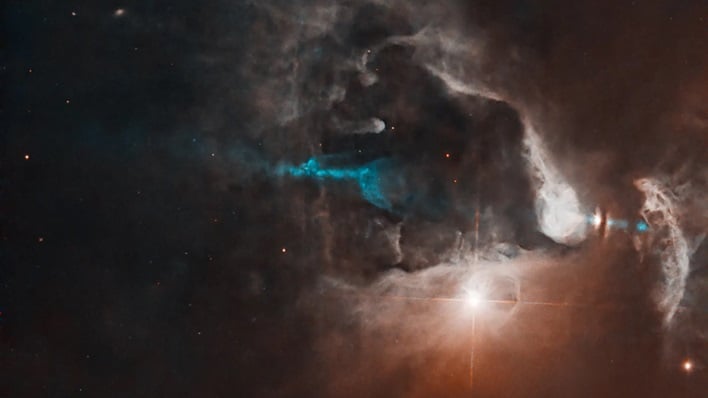NASA’s Hubble Captures Dramatic Birth Of Young Stars In Breathtaking Detail

The multi-star system, FS Tau, comprises FS Tau A, the bright star-like object seen near the middle of the image below, and FS Tau B, the bright object to the far right obfuscated by a dark vertical lane of dust. The two objects are surrounded by the luminous gas and dust of the stellar nursery.
NASA eloquently describes the scene as “Jets emerge from the cocoon of a newly forming star to blast across space, slicing through the gas and dust of a shining nebula in this new image from NASA’s Hubble Space Telescope.”
While FS Tau A is a T Tauri binary system, comprising two stars orbiting one another, NASA says FS Tau B is a newly forming star, or protostar, surrounded by a protoplanetary disk. The disk, described as being a pancake-shaped collection of dust and gas leftover from the formation of the star, will eventually merge into planets, according to NASA.
FS Tau B is also believed to be in the process of becoming a hydrogen-fueled star, which is similar to Earth’s Sun. This protostar is also the source of an unusual asymmetric, double-sided jet, which is visible in blue in the image from Hubble. NASA remarked that this structure could have resulted from the difference in the rates at which mass is being expelled from the object.
Hubble’s observations of this Taurus-Auriga region were done as part of an investigation of edge-on dust disks around young stellar objects. The iconic space telescope has previously observed this region, whose star-forming activity creates an interesting target for astronomers.


